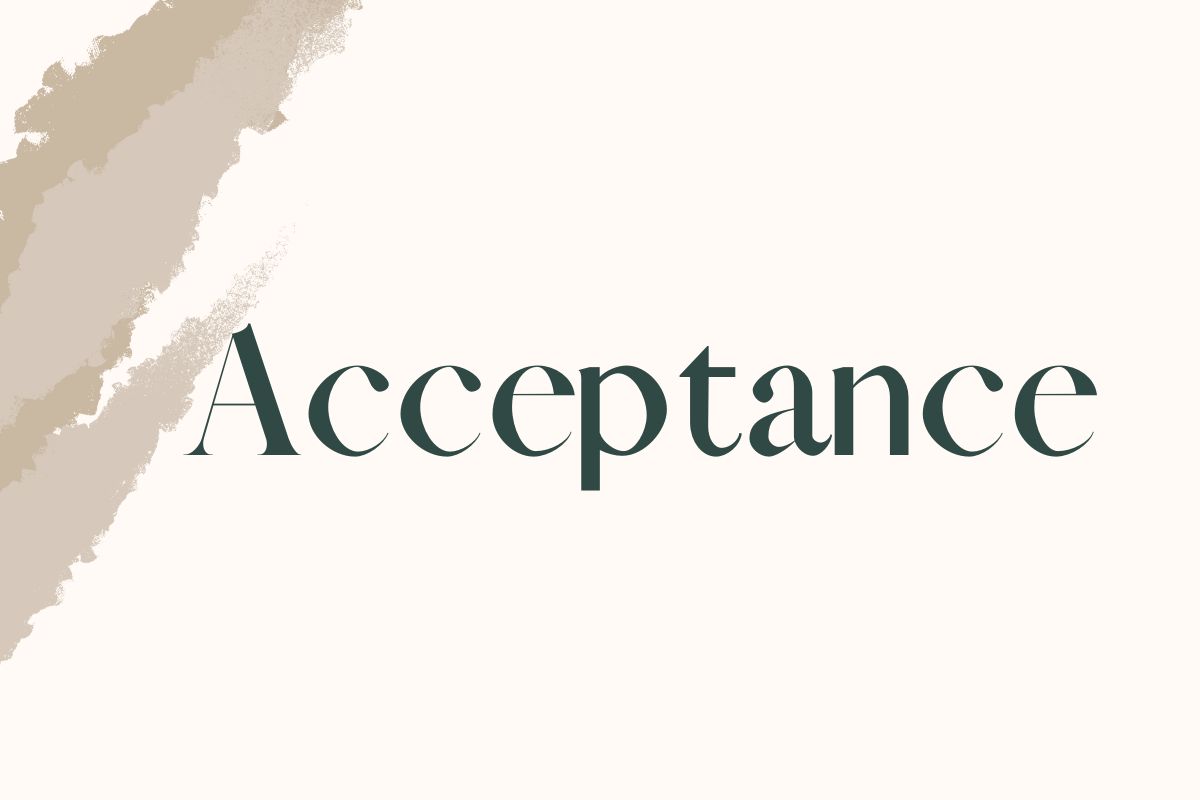Acceptance Paragraph For Students
Acceptance isn’t just a concept; it’s a profound force. It’s like a big hug that says, “It’s okay to be you!” Acceptance helps us understand that it’s okay to be different. Also in this acceptance paragraph, we will learn self-acceptance to the vibrant tapestry of cultural acceptance, we uncover the depth and complexity of this fundamental human experience.
So let’s read the paragraph on acceptance.
Short Paragraph on Acceptance
Acceptance embodies the profound act of embracing reality as it unfolds, devoid of resistance or condemnation. It encompasses the ability to acknowledge and accommodate the myriad facets of existence, both favorable and unfavorable. At its essence, acceptance entails a deep comprehension that while external circumstances may not always be within our control, we retain the power to manage our responses and attitudes towards them. It is not about acquiescence or resignation but rather about finding tranquility amidst life’s unpredictable currents. Acceptance serves as a cornerstone for personal development, emotional equilibrium, and harmonious relationships, fostering resilience and fostering deeper connections with others.
Acceptance Paragraph – 1200 Words
Acceptance, in its profound complexity, embodies a fundamental aspect of human experience—a dynamic interplay between perception, reaction, and understanding. It transcends mere acknowledgment and delves deep into the realms of emotion, cognition, and behavior. At its core, acceptance is the art of embracing reality in its entirety, devoid of resistance or judgment. It encompasses a broad spectrum of experiences, from the mundane to the extraordinary, from the joys of success to the depths of sorrow.
To truly grasp the essence of acceptance, one must delve into its multifaceted nature. It is not merely a passive surrender to fate or circumstance but rather an active engagement with the world as it is. Acceptance requires a willingness to confront the challenges and uncertainties of life with courage and resilience. It demands a profound understanding of the inherent imperfections of existence and an unwavering commitment to finding peace amidst chaos.
In essence, acceptance is the antidote to the human tendency towards resistance and denial. It is a transformative force that allows individuals to transcend their limitations and embrace the fullness of their being. By accepting reality as it is, one can release the burdens of resentment, regret, and bitterness, and cultivate a sense of inner peace and contentment.
But why is acceptance so important? What makes it such a vital aspect of the human experience? The answer lies in its profound implications for personal growth, emotional well-being, and interpersonal relationships.
At a fundamental level, acceptance is essential for personal growth and development. It allows individuals to confront their fears and insecurities with courage and resilience, rather than succumbing to the paralyzing grip of self-doubt and anxiety. By accepting their strengths and weaknesses, successes and failures, individuals can cultivate a deeper sense of self-awareness and self-compassion, paving the way for personal growth and transformation.
Moreover, acceptance plays a crucial role in promoting emotional well-being and psychological resilience. In a world fraught with uncertainty and adversity, the ability to accept reality as it is can be a powerful coping mechanism. It allows individuals to navigate life’s challenges with grace and equanimity, rather than succumbing to the debilitating effects of stress, anxiety, and depression. By embracing the full spectrum of human experience, including pain and suffering, individuals can cultivate a sense of resilience and inner strength that enables them to weather life’s storms with courage and dignity.
Furthermore, acceptance is essential for fostering healthy, fulfilling relationships with others. By accepting others as they are, rather than trying to change or control them, individuals can cultivate deeper connections based on mutual respect, understanding, and empathy. Acceptance allows individuals to appreciate the unique perspectives and experiences of others, fostering a sense of unity and belonging that transcends the boundaries of individual differences.
But what are the different types of acceptance, and how do they manifest in our lives? From self-acceptance to cultural acceptance, there are myriad ways in which acceptance can manifest in our thoughts, emotions, and behaviors.
Self-acceptance, perhaps the most fundamental form of acceptance, involves embracing oneself fully, flaws and all. It entails recognizing and honoring one’s strengths and weaknesses, successes and failures, without judgment or self-criticism. Self-acceptance is essential for cultivating a sense of self-worth and self-confidence, allowing individuals to navigate life’s challenges with grace and resilience.
Psychological acceptance, on the other hand, involves acknowledging and making room for all thoughts and emotions, without judgment or suppression. It entails a willingness to experience discomfort and distress without trying to control or avoid it, allowing individuals to cultivate a deeper sense of emotional resilience and well-being.
Public acceptance, meanwhile, involves being recognized and embraced by society or a specific community. It entails seeking validation and approval from others, whether in the form of praise, recognition, or acceptance. Public acceptance can be a powerful motivator for behavior and can profoundly influence individuals’ sense of self-worth and identity.
Social acceptance, similarly, involves gaining approval and validation from peers or social groups. It entails conforming to social norms and expectations, whether consciously or unconsciously, to gain acceptance and approval from others. Social acceptance can be a powerful driver of behavior, shaping individuals’ attitudes, beliefs, and values in profound ways.
Cultural acceptance, meanwhile, involves respecting and appreciating diversity in cultural beliefs, practices, and norms. It entails recognizing and valuing the unique perspectives and experiences of different cultural groups, whether within one’s society or in the broader global community. Cultural acceptance is essential for fostering harmony and understanding in multicultural societies and for promoting social justice and equality.
Parental acceptance, on the other hand, involves receiving love and approval from parents or caregivers. It entails feeling valued and accepted by one’s parents, whether through words, actions, or emotional support. Parental acceptance is crucial for children’s emotional development and well-being, shaping their sense of self-worth, identity, and belonging.
Conditional acceptance, meanwhile, involves acceptance contingent upon meeting certain criteria or expectations. It entails seeking approval and validation from others, whether consciously or unconsciously, by conforming to their expectations and standards. Conditional acceptance can be a source of stress and anxiety, as individuals may feel pressured to meet unrealistic standards or expectations to gain acceptance and approval from others.
Expressed acceptance, on the other hand, involves openly communicating acceptance through words or actions. It entails expressing love, support, and validation for others, whether through verbal affirmations, gestures of affection, or acts of kindness. Expressed acceptance can be a powerful source of comfort and reassurance, helping individuals feel valued and appreciated by others.
Implied acceptance, meanwhile, involves acceptance inferred from indirect cues or behaviors. It entails perceiving acceptance and approval from others, whether consciously or unconsciously, based on their actions, gestures, or body language. Implied acceptance can be a subtle yet powerful source of validation and affirmation, shaping individuals’ perceptions of themselves and others.
But how can one cultivate acceptance in their own life? What are some practical strategies for practicing acceptance daily? From paying attention to internal cues to developing the language of acceptance, there are myriad ways in which individuals can cultivate acceptance in their own lives.
One key strategy for practicing acceptance is to pay attention to internal cues and notice resistance when it arises. By cultivating mindfulness and self-awareness, individuals can become more attuned to their thoughts, emotions, and physical sensations, allowing them to recognize when they are resisting reality or clinging to unrealistic expectations. By acknowledging and accepting these internal cues without judgment or self-criticism, individuals can begin to cultivate a deeper sense of acceptance and equanimity in their lives.
Another key strategy for practicing acceptance is to develop the language of acceptance and let go of rigid expectations. Rather than focusing on how things should or shouldn’t be, individuals can learn to accept reality as it is, embracing the full spectrum of human experience with openness and compassion. By reframing unhelpful thoughts and beliefs in terms of acceptance and letting go, individuals can cultivate a deeper sense of peace and contentment in their lives.
Yet another key strategy for practicing acceptance is to let the body help by relaxing tense muscles and physically loosening up while meditating on something difficult to accept. By bringing awareness to the body and consciously relaxing tension, individuals can create space for acceptance to arise naturally, allowing them to let go of resistance and surrender to the present moment. By practicing acceptance in this embodied way, individuals can cultivate a deeper sense of peace and equanimity in their lives.
Finally, one key strategy for practicing acceptance is to repeat these steps whenever one notices themselves getting overly critical.
Acceptance From Big Book Paragraph
From The Big Book of Alcoholics Anonymous, Fourth Edition, Page 417 My thought for acceptance is like that:
We must accept criticism, rejection, failure, change, diversity, imperfection, uncertainty, limitation, and responsibility as integral parts of growth and development. Embracing these aspects fosters resilience, adaptability, and empathy, enabling us to navigate life’s challenges with grace and understanding. Through acceptance, we cultivate the strength to learn from setbacks, the courage to embrace new opportunities, and the humility to recognize our limitations. In acknowledging these realities, we empower ourselves to evolve, contribute positively to our communities, and lead lives of fulfillment and purpose.
Types of Acceptance Table
| Type of Acceptance | Description |
|---|---|
| Self Acceptance | Embracing oneself fully, including strengths, weaknesses, and imperfections. |
| Psychological Acceptance | Acknowledging and making room for all thoughts and emotions, without judgment or suppression. |
| Public Acceptance | Being recognized and embraced by society or a specific community. |
| Social Acceptance | Gaining approval and validation from peers or social groups. |
| Cultural Acceptance | Respecting and appreciating diversity in cultural beliefs, practices, and norms. |
| Parental Acceptance | Receiving love and approval from parents or caregivers. |
| Conditional Acceptance | Acceptance is inferred from indirect cues or behaviors. |
| Expressed Acceptance | Openly communicating acceptance through words or actions. |
| Implied Acceptance | Acceptance inferred from indirect cues or behaviors. |
Helpful Word Meaning
| Word | Meaning |
|---|---|
| Embrace | To accept or support willingly or enthusiastically. |
| Imperfections | Flaws or shortcomings. |
| Suppression | The act of holding back or restraining. |
| Contingent | Dependent on certain conditions or circumstances. |
| Inferred | Concluded or deduced by reasoning from evidence or premises. |
| Norms | Standards or guidelines that are typical or expected within a society or culture. |
| Diversity | The range of differences or variations among people or things. |
| Equanimity | Mental calmness, composure, and evenness of temper, especially in difficult situations. |







